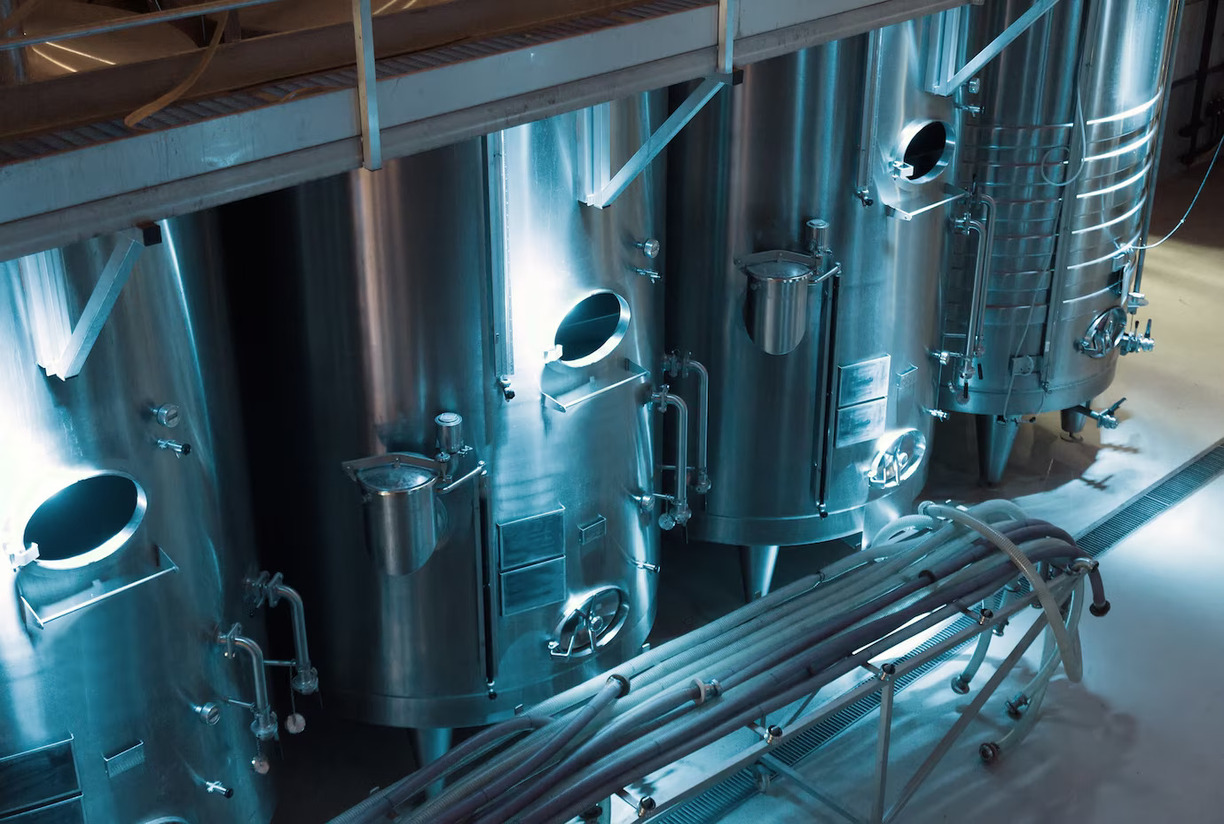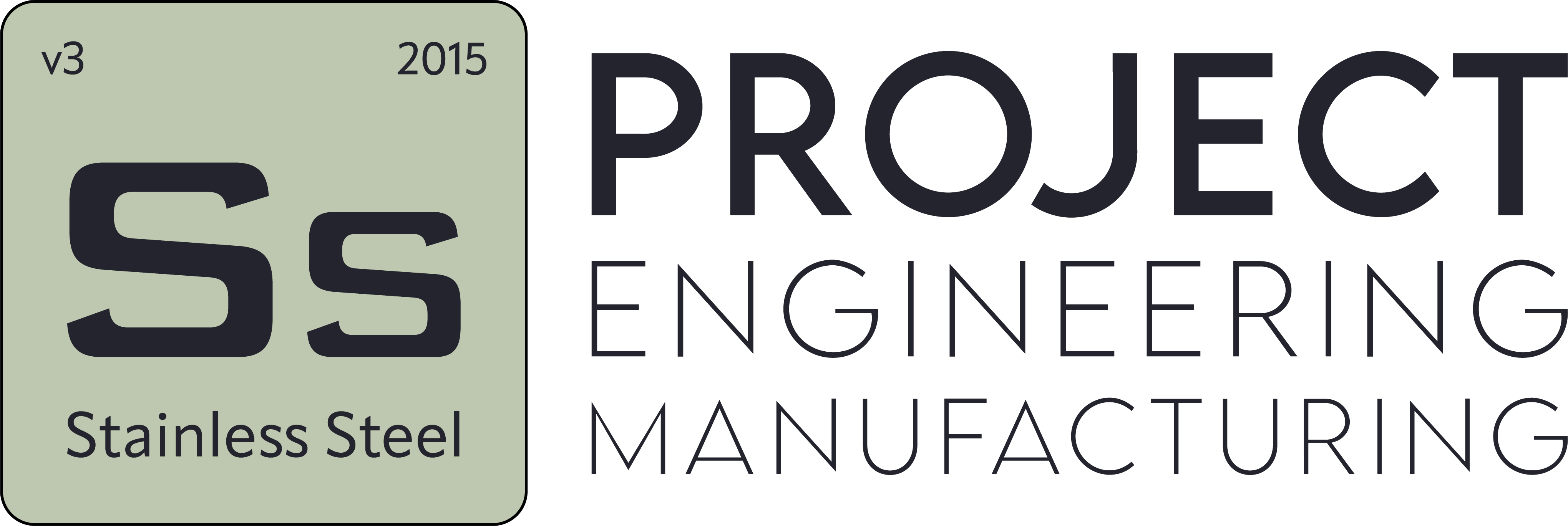Sanitary Process Tanks
- Blog
- Sanitary Process Tanks
Sanitary Process Tanks
Ensuring Safety and Quality in Food and Beverage Production with Hygienic Process Tanks
Hygienic process tanks play a significant role in industries where hygiene is critical, particularly in the food, beverage, pharmaceutical, and cosmetic sectors. These tanks are specially designed to process and store raw materials, semi-finished products, and finished products in a safe and contamination-free environment. The purpose of hygienic process tanks is to prevent contamination during production, transportation, and storage, which is essential for maintaining product quality and safety. In this article, we will explore the importance, design, features, benefits, and the role of hygienic process tanks in meeting hygiene and safety standards.
What Are Hygienic Process Tanks?
Hygienic process tanks are specialized tanks used in industries where hygiene is a priority, particularly in the food, beverage, pharmaceutical, and cosmetic industries. These tanks are designed to ensure that products are processed, stored, and transported in an environment free from contamination. Hygienic process tanks are engineered and manufactured to prevent the growth of bacteria, mold, and other pathogens on their interior surfaces. Additionally, these tanks are typically constructed using corrosion-resistant materials such as stainless steel and feature easily cleanable surfaces.
These tanks are usually equipped with CIP (Clean-In-Place) systems, which allow for the cleaning and disinfection of their interior surfaces without disassembly. This feature provides significant advantages in terms of both time and labor. The design of hygienic process tanks also ensures that their interiors are smooth and even, thereby preventing the accumulation of microorganisms.
Design and Features of Hygienic Process Tanks
The design of hygienic process tanks is extremely important to ensure compliance with the hygiene and safety standards of various industries. These tanks are typically designed in accordance with guidelines from regulatory bodies such as the FDA (Food and Drug Administration) or GMP (Good Manufacturing Practices). This ensures a safe environment during the processing, storage, and transportation of products.
Hygienic process tanks must possess the following key design features:
- Smooth Surfaces: The interior surfaces of the tank must be smooth to prevent the accumulation of bacteria. Smooth surfaces facilitate cleaning and ensure the maintenance of hygiene standards.
- Easy Access for Cleaning: The design of hygienic process tanks is made to provide easy access for cleaning and inspection. This ensures that the interior surfaces of the tanks can be thoroughly cleaned.
- Seamless Structure: Hygienic process tanks are typically made seamless, reducing the risk of contamination. Seams can become points of bacterial accumulation, making seamless designs a critical feature for these tanks.
- CIP (Clean-In-Place) System: The CIP system is a critical feature in hygienic process tanks. This system enables cleaning and disinfection processes to be carried out without disassembling the tank, saving both time and labor.
- Temperature Control: Some hygienic process tanks can be integrated with heating or cooling systems to maintain stored products at an ideal temperature. This feature is particularly important in the food and beverage industry to preserve product quality and safety.
Materials Used for Hygienic Process Tanks
The material selection for hygienic process tanks is crucial in terms of the tank’s durability and hygienic properties. The materials used in their production must be corrosion-resistant, easy to clean, and non-reactive with the stored products. The most commonly used materials for hygienic process tanks include:
- Stainless Steel: Stainless steel is the most widely used material for hygienic process tanks because it is durable, resistant to corrosion, and very easy to clean. It is preferred in industries such as food processing, beverage production, and pharmaceuticals where hygiene is paramount.
- Aluminum: Aluminum is sometimes used in hygienic process tanks as lightweight alternatives. Although not as corrosion-resistant as stainless steel, it is used in applications where liquid products need to be transported, such as in the food industry for liquid transportation.
- Glass-Lined Steel: Glass-lined steel tanks are used in some applications where non-reactive surfaces are required. These tanks are particularly useful in the chemical industry for storing strong acids or bases.
- Plastic and Composite Materials: In some cases, hygienic process tanks can be made from high-quality plastic or composite materials. These materials are resistant to certain chemicals and can be used due to their lightweight nature, though they are not as durable as stainless steel.
Benefits of Hygienic Process Tanks
Hygienic process tanks offer numerous benefits, particularly in industries with high hygiene requirements. The main benefits provided by these tanks include:
- Hygiene and Safety: The primary benefit of hygienic process tanks is their ability to prevent contamination. Smooth, non-porous surfaces and corrosion-resistant materials ensure that stored products remain hygienic and safe.
- Reduced Cleaning Time: With features like CIP systems, hygienic process tanks can be cleaned quickly and efficiently without disassembly, reducing the time and labor required for cleaning.
- Regulatory Compliance: Hygienic process tanks are designed to comply with the strictest regulatory standards, such as FDA and GMP. This ensures that products processed and stored in these tanks are safe.
- Longevity and Durability: Hygienic process tanks made from stainless steel are highly durable and can withstand the demanding conditions of the industries they serve. These tanks are long-lasting, providing a cost-effective investment for businesses.
- Flexibility: Hygienic process tanks can be designed to meet the specific needs of different industries. Whether for food production, beverage fermentation, or pharmaceutical manufacturing, these tanks can be customized to meet the requirements of each process.

Applications of Hygienic Process Tanks
Hygienic process tanks are used in various industries where hygiene is critical. The most common applications of these tanks include:
- Food Processing: In the food industry, hygienic process tanks are used for storing, mixing, and processing liquids such as milk, fruit juice, sauces, and soups. These tanks ensure that products are processed and kept fresh without being exposed to contamination.
- Beverage Production: In the beverage industry, hygienic process tanks are used for fermenting and storing alcoholic beverages such as beer, wine, and spirits. They are also used in the production of non-alcoholic beverages like soda and fruit juice, preventing contamination during the production process.
- Pharmaceutical Manufacturing: In the pharmaceutical industry, hygienic process tanks are used for producing drugs, vaccines, and other healthcare products. These tanks ensure that products are manufactured in a sterile environment, preventing contamination.
- Cosmetic Production: Hygienic process tanks are also used in the production of cosmetic products. In the manufacturing of creams, lotions, shampoos, and other personal care products, these tanks prevent contamination and ensure hygiene standards are maintained.
Challenges and Considerations in Using Hygienic Process Tanks
While hygienic process tanks offer many benefits, there are also some challenges and considerations to keep in mind during their use:
- Cost: Hygienic process tanks, due to their specialized materials and features, can often be more expensive than traditional tanks. However, this investment is typically justified by the enhanced product quality and safety.
- Maintenance: Although hygienic process tanks are designed to require minimal maintenance, regular inspections and cleaning procedures are necessary.
- Regulatory Compliance: The use of hygienic process tanks requires compliance with local and international regulations. Companies must ensure that their tanks are regularly inspected and meet all safety standards.
Hygienic process tanks play a critical role in ensuring the safety, quality, and hygiene of products, particularly in industries where hygiene is a priority. Their design and features help prevent contamination, reduce cleaning time, and ensure that products are processed in compliance with hygiene standards. When used in food, beverage, pharmaceutical, or cosmetic production, these tanks preserve product integrity and ensure safety. As industries continue to evolve, the demand for hygienic process tanks will remain high, and these tanks will continue to play a vital role in safe and efficient production.


